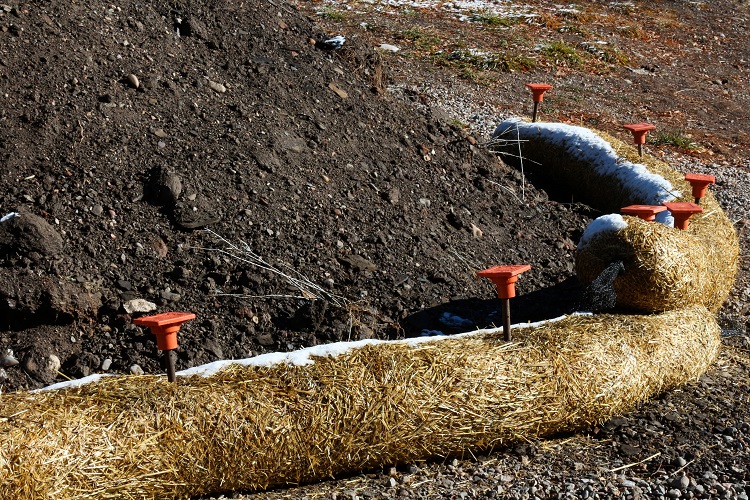Why Erosion Control is a Must

Understanding soil erosion is critical to any contractor who deals with site or subsurface work. Not following proper erosion procedures can be very costly.
When we use the word erosion, we are speaking about the detachment of soil, sediment, or rock fragments caused by water, wind, ice, or gravity.
Erosion control is important for many construction activities, including removal of protective vegetation or ground cover, excavation, grading, land filling, stock piling of dirt or fill materials, and dewatering.
Nearly all city and state municipalities have ordinances in place to minimize the amount of sediment and other pollutants carried by runoff or discharged into our lakes, streams, and wetlands. The possibility of erosion affecting public storm sewers as well as right-of-ways in towns and cities is a concern that prompts inspectors to take notice of erosion control measures on construction projects when driving by.
Let’s look at a few immediate actions we can take to reduce the likelihood of problems caused by soil erosion on a job site.
- Always call diggers hotline to locate public underground utilities before beginning any construction. You may also want to research any private utilities that may be crossing the site. Diggers hotline does not locate private utilities.
- Install a perimeter silt fence. The direction of water flow will determine proper installation. Trench the silt fence into the ground with hardwood stakes driven into the soil. You can purchase materials for silt fences at most lumberyards. Soil around the silt fence should be compacted after installation.
- Install a tracking pad at the construction site entrance. This gravel construction entrance will clean the mud off tires of dump trucks, cement trucks, or other vehicles leaving the site prior to pulling on to the public road.
- Storm sewer inlets are vulnerable to the runoff of soil and gravel, entering and disrupting critical flow lines within sewer piping and man holes. Filter fabric, fiber rolls, straw bales, and riprap (wash rock) are used as sediment filters to control erosion and protect storm sewer systems.
- Re-establish vegetation in disturbed areas to stabilize the ground after construction. Vegetation creates a root structure in top soil, minimizing erosion. Sod, seed and straw mats, mulch, and fabric, as well as different plantings, can all be part of finalizing the construction project.
- A good set of commercial construction drawings would include soil erosion and sediment control drawings with general notes. These documents, often provided by the site engineer, should include the existing site plan with elevations, silt fence detail, storm sewer inlets with inlet sediment filter detail, construction entrance and tracking pad detail, construction sequencing notes, storm water pollution prevention plan, and soil protection chart, seeding information, and inspection and maintenance procedures.
The scope of work pertaining to erosion control is usually carried out by the excavating, utility, sewer and water, concrete, and landscape contractors. However, all contractors have a responsibility if they are affecting erosion. This may be spelled out in the contractor/subcontractor agreement. The site superintendant would document in the job site log all daily activities, including erosion control work.
An insurance company that cares about you and insuring the things you wish to be insured.
Get a Quote> Find an Agent>

